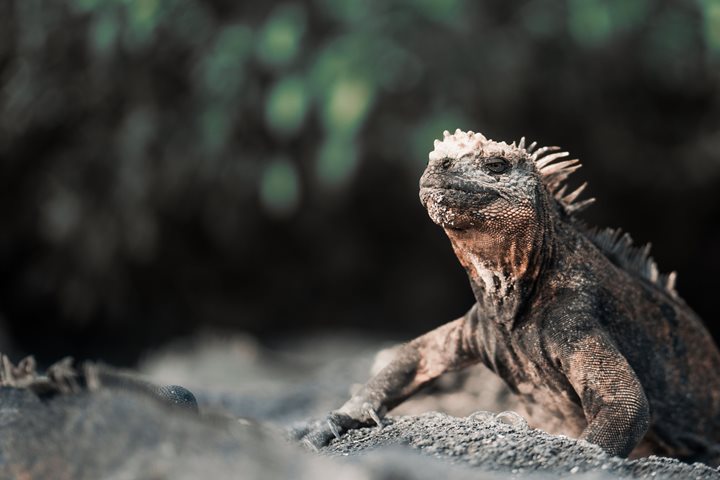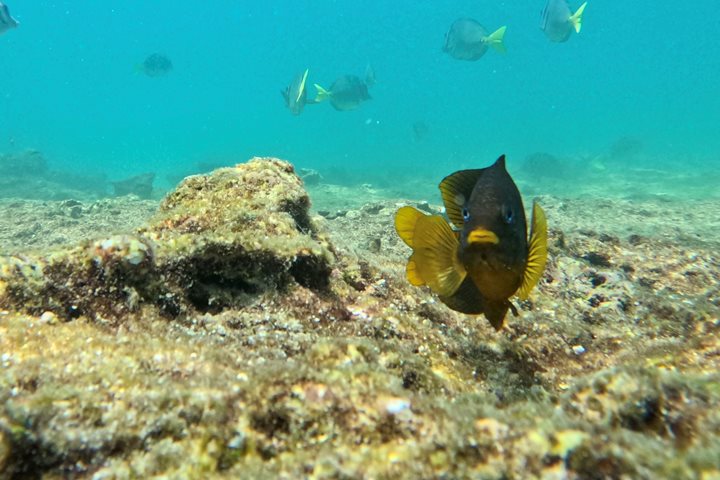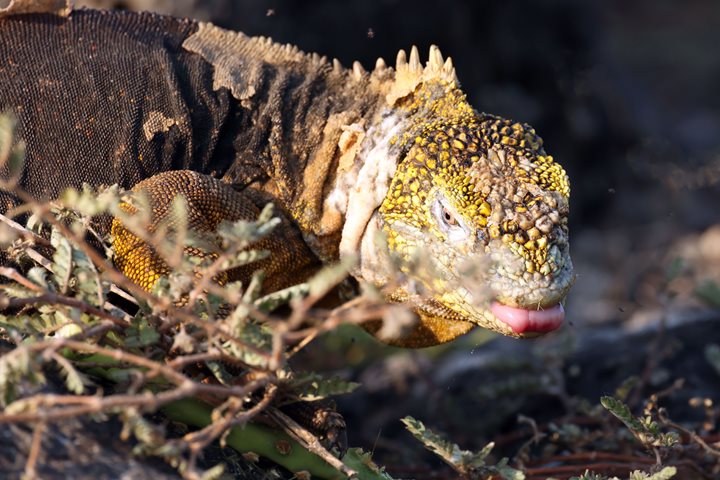Our day began with great anticipation as we set off for the iconic Chinese Hat, a small islet located just off the southeastern coast of Santiago Island in the Galapagos archipelago. The sea was calm, and the weather couldn't have been more perfect. As we approached Chinese Hat, we were greeted by the striking sight of this volcanic cone. Its unique shape resembles a traditional Chinese hat. Our day began with pre-breakfast kayaking along the calm, clear waters, which offered the perfect setting for a serene paddle among mesmerizing landscapes. As the morning sun cast its golden hue on the volcanic rocks, we were in awe of the scenery around us.
After our kayaking adventure, we returned to National Geographic Islander II for a hearty breakfast to refuel for the exciting day ahead. Anticipation was palpable as we prepared for the morning snorkeling session. The water was exceptionally clear, offering us unparalleled visibility.
During our snorkeling adventure, we were treated to a spectacular underwater world teeming with life. We had the privilege of observing whitetip reef sharks gracefully patrolling the depths, sea turtles gliding by elegantly, and playful sea lions swimming around rock formations. To top it off, Galapagos penguins darted through the water with astonishing agility, showcasing their unique adaptation to this warm and unique marine environment.
In the afternoon, we embarked on a short navigation to Sullivan Bay, located on Santiago Island. This bay is known for its otherworldly, lunar-like landscape, created by extensive volcanic eruptions. The last one occurred in 1897, and it forever transformed the island’s topography.
We embarked on a hike along the new lava flows. The solidified lava stretched as far as the eye could see. The impact of the 1897 eruption was evident. The stark contrast between the black, twisted formations and the surrounding landscape is a testament to the power of nature. Like an open book, this place shares insights about the formation of pahoehoe lava and the geological events that shaped this otherworldly terrain. The hike revealed the struggle of pioneer plants, such as resilient lava cacti, to establish themselves in the harsh, barren environment. As we concluded our hike, we marveled at how the eruption forever altered the topography of Sullivan Bay. It was a humbling experience to stand on the very ground where these powerful geological forces left their mark.
Today's expeditions were unforgettable. After sunset, we returned to National Geographic Islander II. We were tired but happy. We had made the best memories on a day that will remain with us forever.







